My diary
Wednesday
July 3, 2019
Chapter 3: AME University: Day One
With a storm blowing in, dawn over the ocean was striking: dark blue clouds, gusting winds, thick, pungent air.
colintaufer
14 chapters
16 Apr 2020
Chapter 3: AME, First Class
Monrovia, Liberia
Wednesday
July 3, 2019
Chapter 3: AME University: Day One
With a storm blowing in, dawn over the ocean was striking: dark blue clouds, gusting winds, thick, pungent air.

A very early start this morning. Alarm: 5:35 a.m. (1:35 a.m. Florida time) and a 6:35 a.m. departure. Starting at 9:00 sharp, we had a class to teach.
Jay and Xaviera picked me up and we headed for the city. Our morning itinerary: first stop, Xaveria’s work. Second stop, Kaldi’s Koffee at the Royal Grand Hotel for a quick breakfast. Third stop, AME University (African Methodist Episcopal), in downtown Monrovia.

Jay as a navigator and driver is brilliant, aggressive, and efficient. No matter the time of day, no matter the destination, traffic can be counted on to be rushed and chaotic and turbulent — and exhilarating, once you shift your mindset. There is a significant adjustment to be made when the American driver first hits Liberian streets. The very formal, very restricted, very cautious American approach to driving does not do here. Quite the opposite. I am sure there are dozens of laws in Liberian law books that regulate the operation of motorized vehicles. But I am equally sure that no Liberian follows them or cares for them, police included. Red lights don’t stop anyone. Lines on the roads are neglected. Shoulders are freely used as extra lanes. Pedestrians on the roadway are meant to be sped past not stopped for. In America, we fret and growl when a car rushes past ours with a foot to spare, or worse when we are standing roadside and a car whooshes past. Here that’s eleven and a half inches too many. Thrilling!
Kaldi’s Koffee is quite a treat. On par with any small coffee shop in America, Kaldi’s is world class. My breakfast was lox and bagel with iced black tea. Jay’s was a salad and lemon ginger tea. By the way, this morning I learned about single-serve tea vessels that deliver your hot tea to your glass by placing it atop the glass and pushing it down. I learned how they work the hard way. Now you know how my pants (and the tabletop) were spotted with warm black tea this morning.
AME University was today’s primary destination. Once filled with a meal we headed that way. The university, as part of its vacation bridge for incoming freshman, delivers a class their curriculum program calls, “Applied Scholastics/Study Skills” delivered by Applied Scholastics Instructor Mr. Colin Taufer. Our class consists of 50 young men and women (mostly women by about a 2:1 ratio, a number that is significant in patriarchal West Africa), selected from 250 applicants, preparing for their first year of college. The class will run two hours a day, three days a week, Monday, Wednesday, and Friday. Today was the orientation.
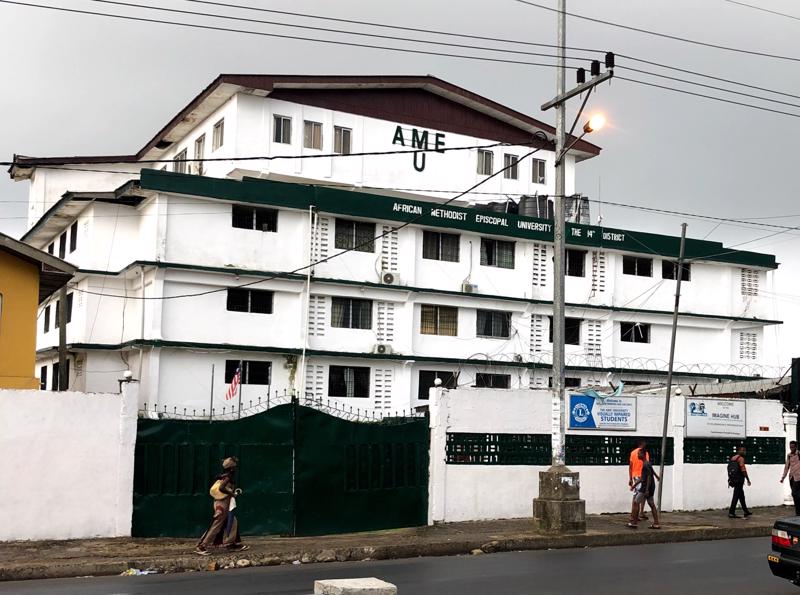
From what I understood from many of the students, AME is a very well thought of institution with a better than average campus. Standing five stories in the heart of downtown Monrovia, AME stands out. Big, imposing.
Like the baggage claim and ATM of Liberia, readers of this diary must rearrange their thinking away from typical American architecture and infrastructure when you envision AME’s campus and facilities. Our classroom was on the third floor, room 056. The first thing I noticed when entering the building is how dark it was. It took my eyes a few moments to adjust to the interior light level. There are lights in the ceilings but they are dim and few and far between. Most of the interior light is natural and comes from the many windows and atriums that rise to the top of the building. The stairwells were particularly dark. The walls and floors are made of stone or ceramic, sound bounces everywhere. It is very noisy. None of the windows have glass, they are simply shuttered openings. Voices from the bottom floor carry to the top floors, ricocheting off of every surface and through every window. In fact, I’m sure I could stand in any room in the building and speak in a loud voice, and regardless of where my intended recipient stood, no matter what floor — first through fifth — or what room, they’d hear me. It is VERY noisy. And when the rain comes, as it does pretty much every day, it is VERY VERY noisy. Of course, every one of the thousands of young men and women moving through the building do so very quietly and with gentle whispers so as not to distract anyone else — NOT! (Did I mention it is loud inside?) All these open windows also mean lots of fresh air (a plus). It also means no air-conditioning (a minus). However, I must say, at least this morning, it never got uncomfortably hot. Phew!
Throughout our two hour class, the lights turned off and on two or three times. Each time this happened no one batted an eye, no one turned to their neighbor. No. With each flicker, everything proceeded as usual. Clearly, everyone is used to it.
As for today’s lesson, it was pretty much the Jay show. He is, without a doubt, one of the best and most engaging public speakers I know. He is warm, confident, friendly, and always sticks to a message of hope or responsibility or empowerment. I have seen him speak to every age of audience from young children to tweens to teens to adults to professionals to elders and his rapport is always spot on. By the time he was done, every student in the class knew who was running the class, who Jay was, who I was, what the expectations were, what the

assignments would be, and what product they would get from the class. They all knew they had arrived to a class unlike any other and they were happy for it. He made them laugh, think, and dig deep. He kicked a few out for some sass (and reintroduced them later). They were better for having heard him speak. And it will only get better from here!
My portion of the class included speed drills with tennis balls and a sampling of what we would be covering, starting with each student describing what barriers they encounter when they study. Even with my crazy American accent and accelerated talking, I think they enjoyed it.
After the class, we went with one of the teachers to meet with some of the senior faculty of the university. We ended up in the office of the VP for Academic Affairs, Timothy K. Kie, Ph.D. Joining us were other important faculty such as the VP Academic Support Services, Romelle A. Horton, Ph.D., and a teacher from the university who was trained at Applied Scholastics International last year. The discussion centered around what needs to be done to get more students familiar with study tech, more teachers trained in its application, more administrators expert in the related administrative technology, and what it would take to create a program for their teachers' college students to become professionals of study tech. I was a big proponent of the latter plan. Imagine a team of Applied Scholastic staff setting up shop at AME for a month or so and not leaving until every teacher in their teacher college, currently forty, was a certified Applied Scholastics instructor. That would be impactful! Not to mention the most cost-effective way to train forty teachers, intensively. Everyone left that meeting energized by possibilities.
We left AME in a driving rain, just like an afternoon summer storm in Florida. After a vigorous sprint through the parking lot, we climbed into the truck wet and happy.
More pictures from today...
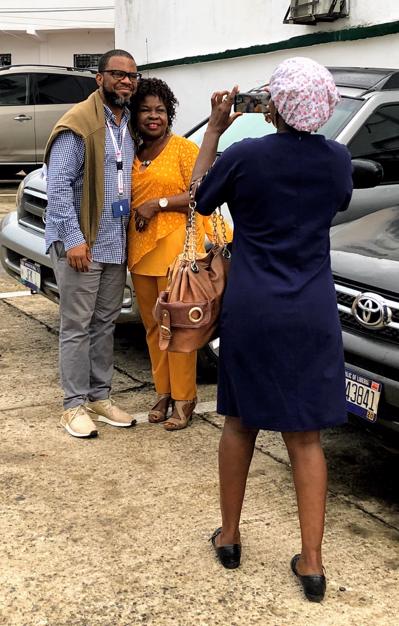
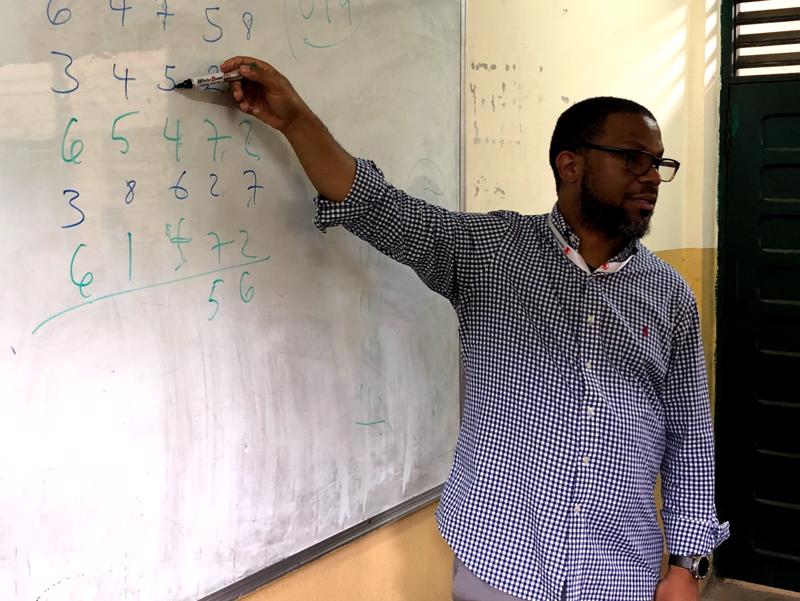
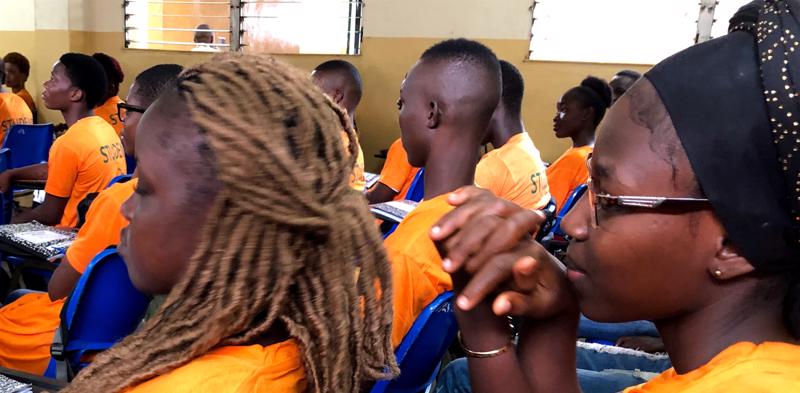
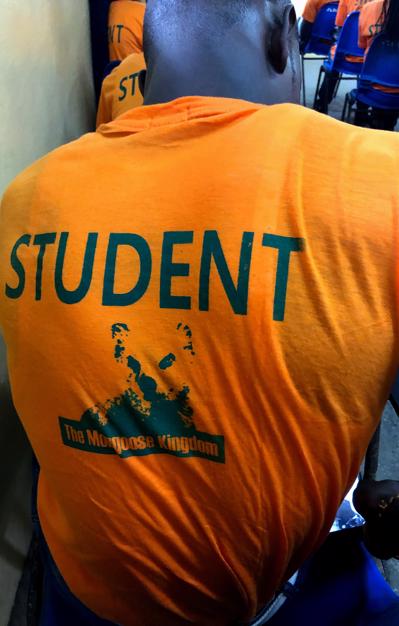

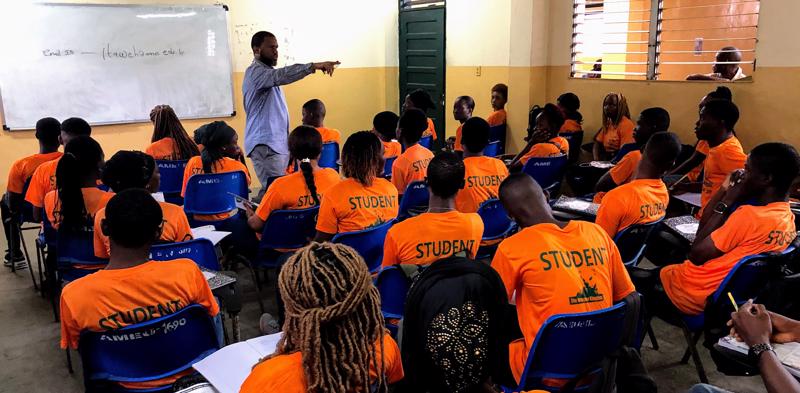
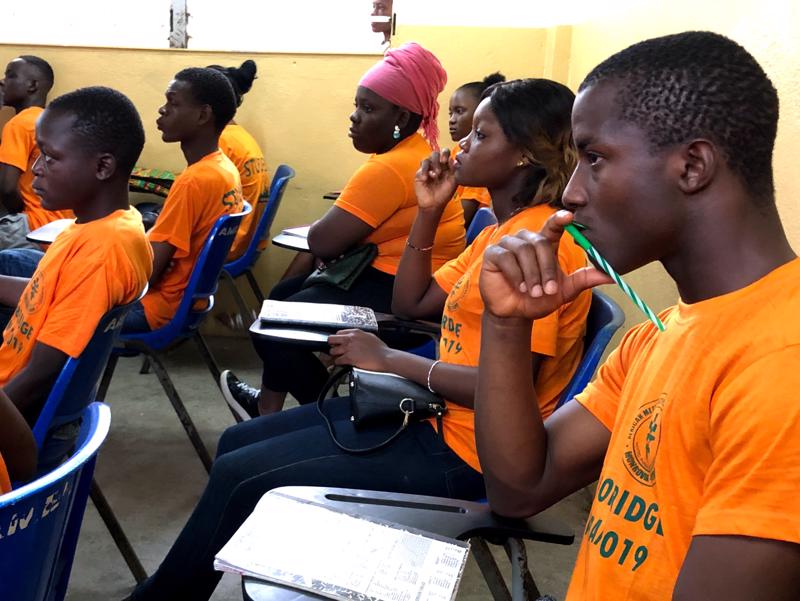
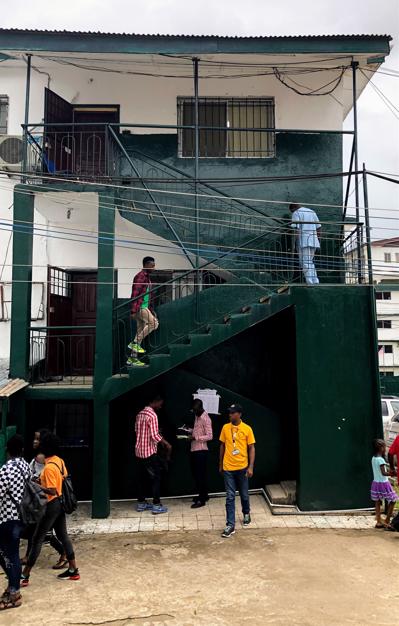

1.
Chapter 1: North America, Europe, Africa
2.
Chapter 2: A Day in Monrovia, A Day with Jay
3.
Chapter 3: AME, First Class
4.
Chapter 4: Save the Children and AME Day 2
5.
Chapter 5: Chill and Road Trip
6.
Chapter 6: Higher Ground and the New Georgia Baptist Church
7.
Chapter 7: Presence of Mass and Fun
8.
Chapter 8: AME!
9.
Chapter 9: RLJ to Jay’s and AME Friday
10.
Chapter 10: Road Trip
11.
Chapter 11: Monday at AME
12.
Chapter 12: The Liberian Pledge of Allegiance
13.
Chapter 13: Colin’s AME Farewell
14.
Chapter 14: An Afternoon in Bomi